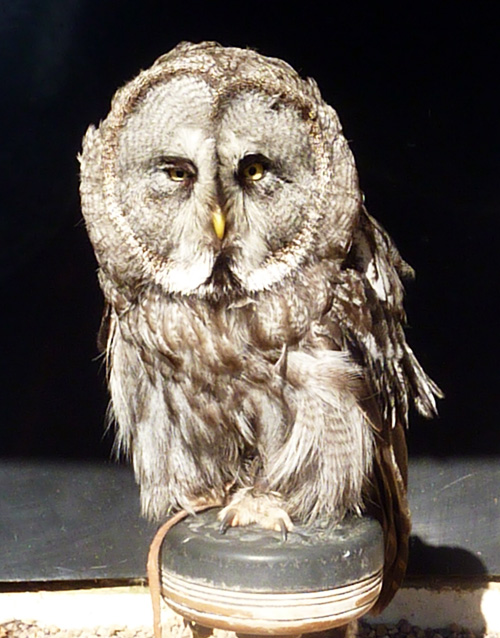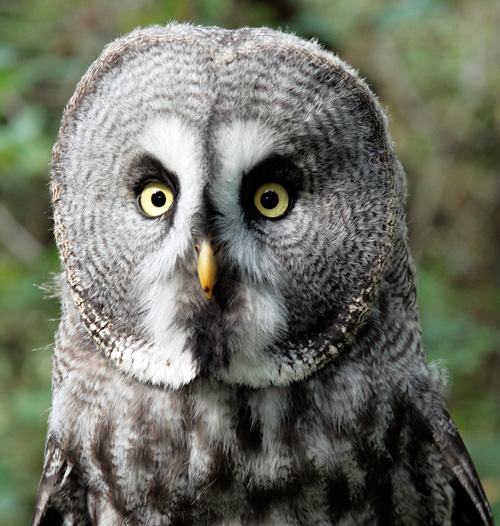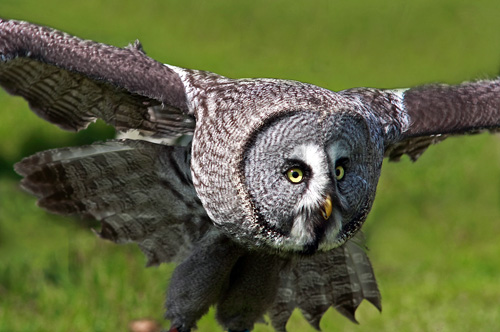
Throughout our flying season, from April to September, our display birds are carefully observed to ensure that they are fit and well and that their feathers are in pristine condition for flying.
Sometimes one of our display birds may begin to moult before the end of the season and will then go back into its aviary to start the annual process of replacing worn or damaged feathers. At other times, one of our raptors may not be quite ready at the beginning of the season, having already started to moult, as is the case at the moment with our Great Grey Owl, Taiga.

Taiga has come out of his aviary in preparation for joining the display team, but just now he is undeniably not looking his splendid best. We’re not sure how long it will take him to complete his moult, as it tends to be a slow process. Taiga will need to shed and replace his feathers carefully, so that his body temperature remains constant, he is still protected from the elements and, in the wild, he would need other birds of the same species to still recognise him.
At this stage though his feathers are definitely not in flying condition and so he contents himself with sitting in his weathering cooing softly to the visitors as they pass by. All our birds of prey have their own characters but, although they are all hand reared, some are friendlier towards humans than others. Taiga is one of our friendliest and he likes nothing better than a good chat with passers by, his stunning yellow eyes gazing inquisitively out of his affable grey face.

The Great Grey is also known as the Lapland Owl and can be found from Alaska across Canada, down the Northern Rocky Mountains, and northern Minnesota. They are also found in northern Europe and Asia. Taiga’s species has a rather fine Latin name, ‘nebulous’, meaning misty or foggy, an apt description for this beautiful bird of prey with its dark grey plumage interspersed with bars and flecks of light grey and white.
The Great Grey is one of the world’s largest owls and so it tends to fly quite slowly and sedately. Great Greys prefer not to fly long distances and are very dependent on their tremendous hearing to locate their prey. In icy conditions, Taiga would be able to hear a small mammal up to 12 inches (30cm) under the snow!









